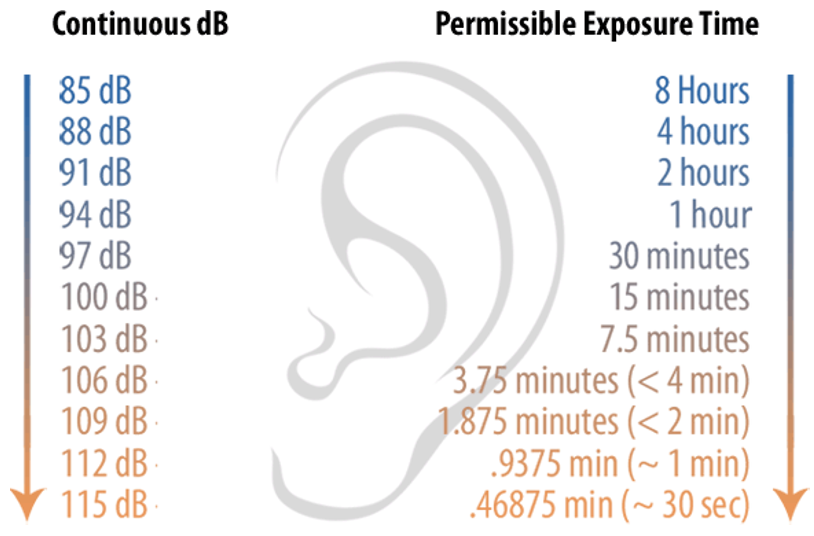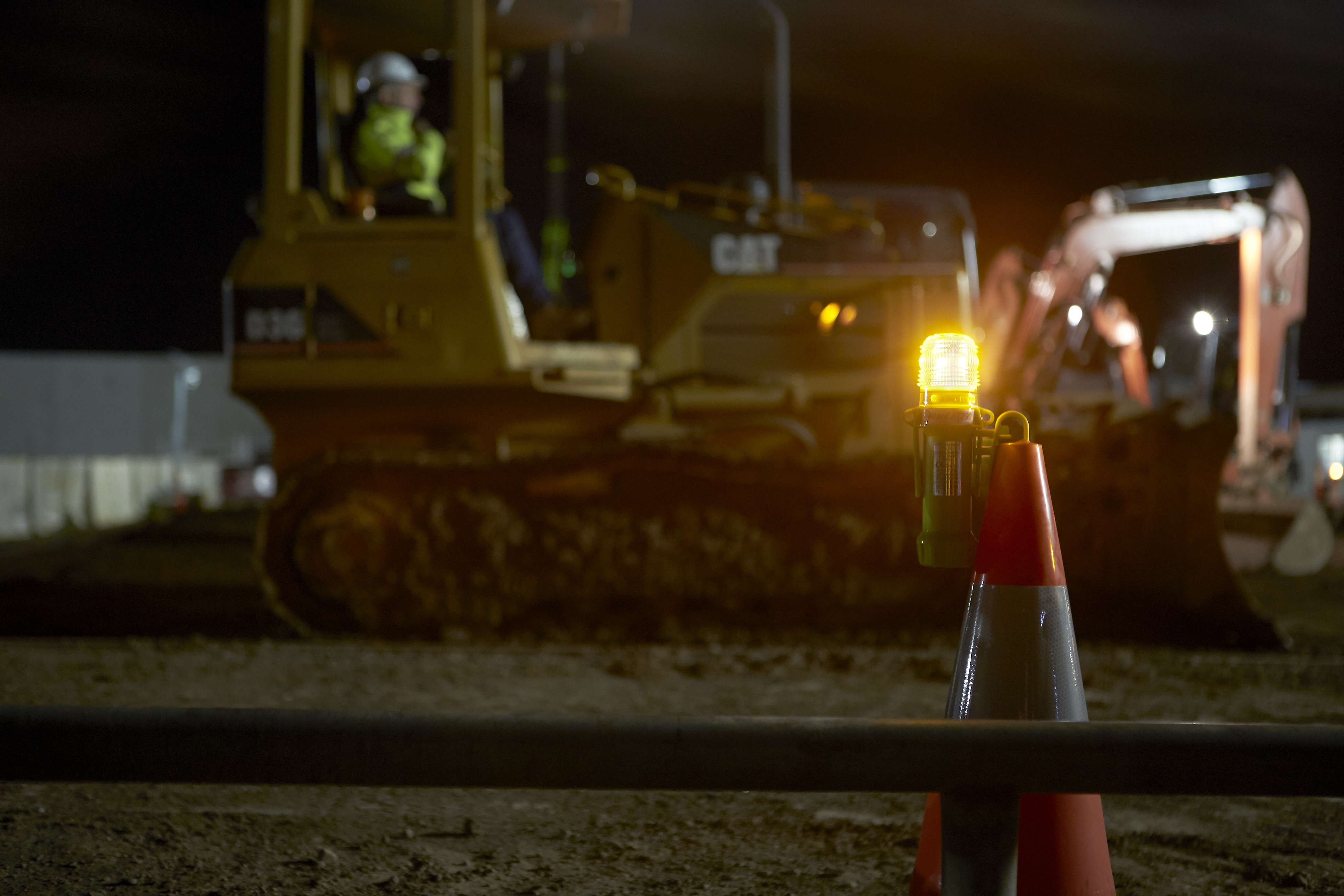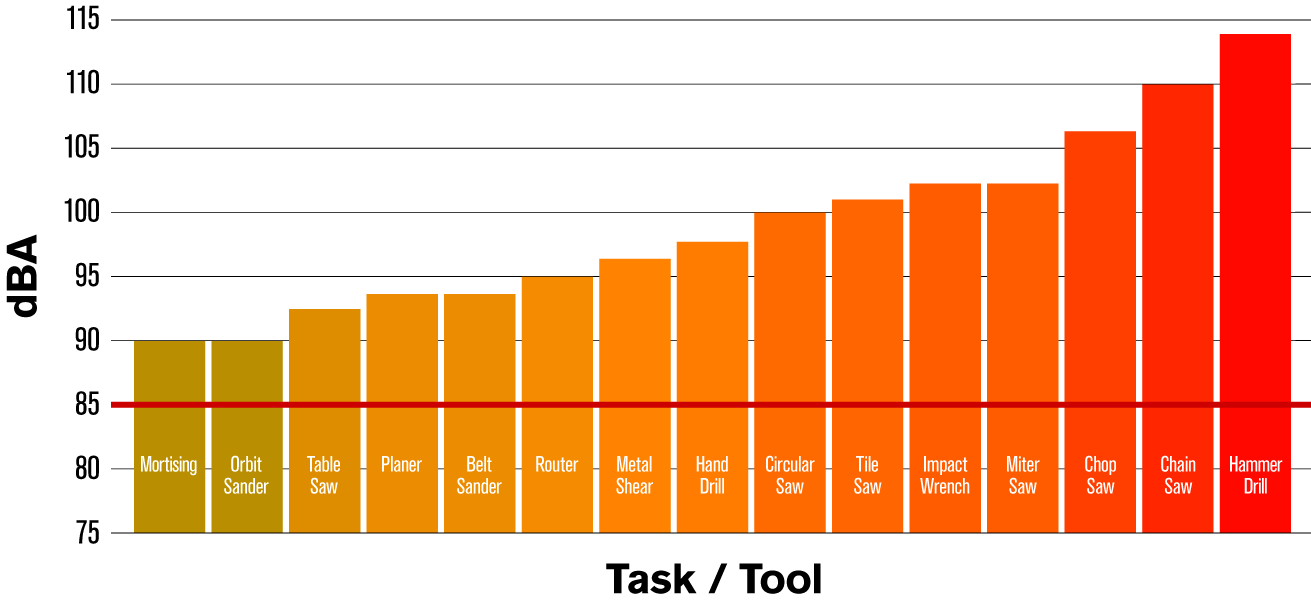4 Hidden Jobsite Risks - And How To Avoid Them
BLOG ARTICLES

Nearly five million workers currently make up the American construction industry. That includes laborers, carpenters, trade and extraction workers, site managers and others. While it may not be apparent from a distance, there are many jobs and tasks occuring simultaneously on a job site - all with their own associated risks. It is important that PPE is selected based on its ability to protect against these identified risks. Each job usually has its own set of obvious hazards and risks, but what about the less obvious ones?
LESS OBVIOUS JOB SITE HAZARDS
UV RAYS
The sun affects construction workers year-round and has become a silent danger even in the cooler months. Cooling PPE and consistent hydration are essential when combating heat exhaustion however these remedies alone do not put the negative impacts of the sun’s UV rays to rest. Overexposure to UV rays can lead to severe burning of the skin and even skin cancer. This should urge safety managers to ensure the PPE their workers are using is providing the right level of protection against the sun’s rays as well as performing as needed to truly invest in the long-term health of their employees.
Protective Clothing
UV rays can penetrate through clothing and onto the skin depending on the color and construction of the materials used. That is why PIP® offers a line of UV protective clothing complete with 50+ UPF, the highest rating of UV protection available for ANSI-compliant garments.
Protective Eyewear
Z87+ Eyewear provides impact protection and side protection, but what about UV ray protection? Eyes, just like the skin, need protection even on cloudy days. Shaded lenses do a great job of protecting the eyes from UV rays and glare, but many dismiss the efficiency of clear lenses. Clear lenses provide protection from 99.9% of UV rays. This is true for impact and non-impact rated eyewear which is useful for workers enduring UV rays from the sun and or UV radiation from a welding/metal working application on the job site.
Head Protection
A hard hat that can withstand the effects of the sun while also delivering high performing impact resistance is important for a construction worker. PIP® offers an extensive line of hard hats (both vented and non-vented) constructed with HDPE and polycarbonate materials that inherently retain their color and structural integrity with prolonged exposure to sunlight. These materials along with UV resistant features such as extended full brims and compatibility with hi-vis shading accessories minimize exposed areas of skin on the head, neck and parts of the shoulders making them less susceptible to sun damage.
HARMFUL NOISE
It is a known fact that construction workers ignore the risk of elongated exposure to noise on the job site. According to NIOSH, about 51% of all construction workers are exposed to hazardous noise throughout the workday, with 31% of those workers reportedly not wearing hearing protection. The average continuous noise level of a construction site can exceed 90 dBA, which only allows for roughly two hours of permissible exposure time without hearing protection to avoid permanent hearing damage. 
Hybrid hearing protection provides a convenient way for construction workers to apply hearing protection. Traditional ear plugs involve the removal of gloves to roll and apply the plug or worse, the application of an ear plug with soiled gloves resulting in ear infections and hygiene issues. This alone makes hybrid hearing protection am optimal solution for both ear canal health and time management on the job site when considering an alternative to earmuffs or traditional ear plugs.
The PIP EZ-Twist™ ear plugs (available in corded and non-corded styles) eliminate the need to roll the ear plug before fitting due to their unique design. With a convenient handling stem located at the base of the foam, workers can gently press and twist the plug into their ear canal without needing both hands. This is an ideal solution for unsanitary work environments where users’ hands or their hand protection is soiled.
FALLING OBJECTS
Construction workers often find themselves working with tools on scaffolding when working on infrastructure and commercial sites. Even residential construction requires working at heights, making dropped objects a threat to workers below. Falling object prevention is key when considering the safety of ground-level workers. A tool weighing just two pounds has resulted in numerous cases of severe head trauma and even death in some instances when dropped onto the head of another worker from 15 feet or higher. That is why the ANSI/ISEA 121 standard was created; to bring a consistent set of guidelines to dropped object prevention and to eliminate the use of makeshift tethering solutions such as duct tape and fabric/string. The standard requires that the rated tool attachment be greater than or equal to the weight of the tool. And that the tether weight limit and the anchor weight limit be equal to or greater than the weight allowance of the tool attachment. OSHA does require employers to address dropped object hazards, which will now be easier than ever to adhere to given the growing popularity of drop prevention and fall protection PPE.
PIP® tool lanyards and other drop prevention accessories are designed with high performing features such as reinforced shock cords and barrel lock carabiners that permit a durable and secure attachment to tools when on the job site. It not only provides a protective measure but a preventative measure as well.
 BOUNDARY VISIBILITY
BOUNDARY VISIBILITY
Sure, making a worker visible on a job site is crucial, but what about the boundaries and work zones of a job site? Construction sites, with high levels of activity, mean workers need to be alert at all times to avoid accidents. In the course of a normal workday they’re exposed to on-site deliveries, loading and unloading of materials, cranes, cement trucks coming and going and other activity – meaning workers need to be aware of potential hazards at all times to stay safe. 25% of accidents occur in the evening despite the fact that less than 9% of the workforce is on duty and more than half of fatalities caused by run-overs or back-overs involve construction vehicles. Such collisions have been attributed to limited visibility around equipment, with statistics concluding that 29% of workers were cleaning or repairing, 28% walking along the road and 18% directing traffic.
![]() Eflare® warning beacons provide durability and visibility on any job site. Unlike traditional flares, Eflare® products are intrinsically safe and water resistant. To minimize the risk of worksite accidents and to maximize worker awareness, using intensely bright Eflare® beacons will ensure boundary awareness and worker safety. Simply place Eflare® beacons around vehicle paths, at unloading areas or no-go zones or having workers clip them on their tool belt dramatically increases awareness.
Eflare® warning beacons provide durability and visibility on any job site. Unlike traditional flares, Eflare® products are intrinsically safe and water resistant. To minimize the risk of worksite accidents and to maximize worker awareness, using intensely bright Eflare® beacons will ensure boundary awareness and worker safety. Simply place Eflare® beacons around vehicle paths, at unloading areas or no-go zones or having workers clip them on their tool belt dramatically increases awareness.
INNOVATION LEADING THE WAY
Often, construction is associated with "run of the mill" PPE. However, true construction and safety professionals understand the complexities behind keeping these men and women carrying out these jobs safe. PIP® recognizes this and works tirelessly to bring new and innovative safety solutions to the construction market.
Contact us for more information or to get in touch with someone on our team of PPE experts.
MORE ARTICLES
Spotlight on Safety - Trends from NSC Safety Congress & Expo
Last September, safety professionals worldwide gathered in Orlando, FL, for the NSC Safety Congress & Expo, where the latest industry advancements and ideas took center stage. Our team arrived wi…
READ MORENitrile vs. Latex Coated Gloves – Which is the Best For Your Workforce?
When it comes to choosing work gloves, selecting the right coating can make all the difference in safety, comfort and performance. Nitrile and latex coatings both offer unique benefits, making them su…
READ MOREExperience Barrier Protection and Flexibility With Extended Use Gloves
Barrier glove technology has changed dramatically over the last 10 years as glove demand has increased. Gone are the days when rough hands or stained fingers defined what we did for a living. Today, ev…
READ MOREThe Evolution of Hand Protection: Advancements, Challenges and Future Directions
Hand protection has seen significant advancements in the past five years, driven by the need to reduce hand injuries and enhance worker safety across various industries. With evolving technologies and ma…
READ MOREConstruction Hand Protection 101: Spotting and Mitigating Risks
In construction, hands are everything – they’re essential for every task, whether it’s operating heavy machinery, handling materials or doing precision work. Protecting them isn’t ju…
READ MOREEN 388 vs ANSI/ISEA 105: Understanding the Key Differences in Hand Protection Safety Standards
When it comes to evaluating the protection levels of work gloves, two major industry standards are recognized worldwide: ANSI/ISEA 105-2016 and EN 388:2016. The ANSI/ISEA 105-2016 standard, developed …
READ MOREHow D3O®iP™ Technology Is Setting A New Standard For Hand Protection
Impact-related hand injuries are the most common occupational hazards in the industrial work force. According to a study conducted by the U.S. Department of Labor between 2021-2022, 23 percent of all work-rel…
READ MOREEnhancing Workplace Safety in the Construction Industry with Multi-Directional Head Protection Technology
It’s no surprise that workers in the construction industry are at a high risk of accidents; the industry consistently ranks as one of the most dangerous in the U.S. The causes of workplace injuries have…
READ MOREUnraveling The Dynamics of ESD Safety
When it comes to Electrostatic Discharge (ESD) Safety, it’s all about control – static control. The ESD Association® sets many of the global standards that are considered guiding principles for static con…
READ MORESpecialized PPE For Electric Vehicle Manufacturing
For years, the United States has been the second largest manufacturer of motor vehicles, manufacturing over 1.5 million cars and 7.6 million commercial vehicles annually due largely to leading companies li…
READ MORESurviving the Summer Heat: A Guide to Workplace Safety and Hydration
With rising temperatures comes an increased risk of heat-related illnesses. These conditions arise when the body struggles to maintain its internal temperature due to excessive heat exposure, leading to p…
READ MOREThe Importance of Providing Proper Fitting PPE For Women
Personal Protective Equipment (PPE) is vital in ensuring worker safety across all trade industries. However, when PPE doesn't fit correctly, it can be just as dangerous as not wearing any protection at…
READ MOREProtective Gear for TIG Welding
For starters, April is National Welding Month. PIP USA appreciates all the hard-working welders of America. For those familiar with welding, the terms heliarc welding, tungsten inert gas welding o…
READ MOREWhat to Consider When Choosing High-Visibility Multi-Season Workwear
Winter and Spring can be a hazardous time of year for people who work outdoors. That's why companies must train their employees on how to stay safe while also providing them with the proper protective eq…
READ MOREMotor Vehicle Manufacturing: Supporting A Successful Safety Program
The Automotive industry, a pillar of America’s economic strength, continues to demonstrate steady growth with rising employment numbers. According to the BLS, employment within the motor vehicles an…
READ MOREMulti-task Welding Gloves Offer The Protection And Dexterity Welders Need
If you’re well-versed with the welding trade, you’ll know that a welder spends the majority of their time not necessarily welding. In fact, welders only spend approximately 25% of th…
READ MOREWhy Welders Need Cut-Resistant Gloves
Hand injuries are among the most common workplace injuries, with over a third involving lacerations. It's not hard to understand why, after all, hands are often closest in proximity to workplace hazards. Th…
READ MORESafety Helmets with Mips® Offer Protection from Linear and Rotational Impacts
Head protection has come a long way since the day of the “Hard-Boiled Hat” which made its appearance in the early 1920s to protect members of the U.S. Navy and coastal shipyard workers from im…
READ MORESustainable Solutions in PPE
Sustainable, eco-friendly, biodegradable… We can go on and on. Every day, we are bombarded with product alternatives that claim to be better for the environment – almost to the point that it…
READ MOREA Welder's Guide to Avoiding Cold Related Injury and Illness
Extreme cold weather is a dangerous situation that can bring on health emergencies and welders working in cold environments are no exception to this. All workers who are exposed to extreme cold are at ris…
READ MOREThe Psychology Behind Effective Food Safety Culture
What’s the first thing you think of when you see a firefighter helmet? If your answer was hero, rescue, save, protect or first responder, you’d be in line with the majority of Americans. The…
READ MOREUnderstanding The Differences Between Antimicrobial, Antiviral and Antibacterial Hand Protection
ANTIMICROBIAL - ANTIVIRAL - ANTIBACTERIAL: What Does This All Mean for Hand Protection? by Anthony Di Giovanni, Vice President of Global Marketing Safety managers are demanding PPE tha…
READ MOREReusable vs. Disposable – Using The Right Garment For The Right Job
Disposable garments or reusable garments – which choice is right for you? There has always been back-and-forth about whether reusable or disposable garments are best for the wo…
READ MORETop 3 Trending Safety Solutions in Construction
According to OSHA, the continuously evolving construction industry accounts for one in five worker fatalities across all private industries. It is crucial to stay vigilant and take the best safety precautions available when facing the multiple hazards present on a construction job site. …
READ MOREHeat Resistant Gloves Are A Hot Topic
Customers often ask us, “What do you mean by ‘light heat resistance’ with these gloves (or sleeves)?” Whether consciously or not – they are looking for some sort of assurance th…
READ MOREWhat is Double Hearing Protection and When Would You Need It?
You might be asking yourself if double hearing protection is something you should be considering. In order to understand what double hearing protection is, let’s start by reviewing why it is nee…
READ MORE6 Key Facts to Help Understand ARC Flash Risks
There are few things no utility worker wants to experience – ARC flash is one of them. The phenomenon is described as a sudden, bright, blinding light and heat that occurs because of a rapid relea…
READ MORE3 Common Types of Cold Stress - And How You Can Prepare For Them
Whether we're ready or not, winter will be here before we know it. Now is the perfect time to start planning ahead to stay prepared. No matter what winter throws your way—whether it's blizzards, fr…
READ MOREANSI/ISEA 138-2019 Classification For Impact Resistant Gloves Helps Decrease Back-Of-The-Hand Injuries
Impact protection has been a hot topic in the hand protection space all year due to the roll-out and adaptation of the new American National Standard for Performance and Classification for Impact-Resistant Gl…
READ MORE10 Things To Consider When Selecting A Hard Hat
If the hard hat is comfortable for the worker, it is more likely to remain on the workers head. The seasoned worker who has been on the worksite longer is accustomed to wearing a hard hat for long du…
READ MOREDisposable Gloves for Heavy-Duty Industrial Jobs?
Many current studies related to the global safety market will highlight how disposable gloves account for a growing share of glove consumption. One research document boldly professes that "disposable gl…
READ MORENoise Induced Hearing Loss Is 100% Preventable. With The Correct PPE.
It seems like every other article on hearing protection is talking about Noise Induced Hearing Loss. And for good reason; Noise Induced Hearing Loss, or NIHL as it’s commonly referred to, is a "s…
READ MOREProtective Sleeve Buyers Guide
When it comes to arm protection, you don't have to settle for what's already out there. Each work environment, task, and person provides a different set of variables that affect the type of protection re…
READ MORECut Protection Fit for a Knight
Cut protection gloves have undergone a wide array of changes over the years. Original cut protection goes back centuries when metal armor and chainmail were used for protection. This was an effective to…
READ MORE